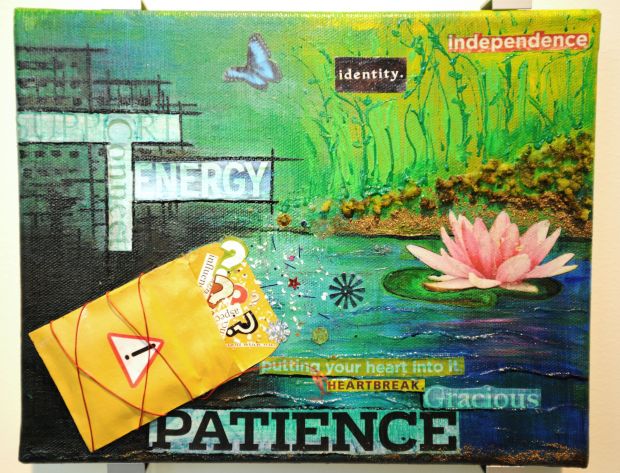Creative Arts Therapy—a Useful Tool for Military Patients
National Endowment for the Arts Expands Military Healing Arts Partnership
By Sally Gifford, Public Affairs Specialist, NEA —

Today, the National Endowment for the Arts announces expansion of the NEA Military Healing Arts Partnership, a collaboration with the Department of Defense that supports music, writing, and visual art therapy at military care facilities including the National Intrepid Center of Excellence at Walter Reed Bethesda and the Fort Belvoir Community Hospital Brain Wellness Center in Virginia. The announcement takes place as part of November’s designation as Warrior Care Month, a Defense Department recognition to highlight resources available to wounded warriors, their families, and caregivers.
Today’s announcement follows Chairman Chu’s remarks at the Pentagon for the Department of Defense’s Healing Arts Recognition Event, which honored service members and drew attention to the important role healing arts and art therapy play in service members’ recovery, rehabilitation and transition process. At the event, Chu discussed the expanded governmental partnership between the two governmental agencies.
“We are honored to work with the U.S. Department of Defense to expand our Creative Arts Therapy programs for our military members affected by traumatic brain injury, post-traumatic stress, and other psychological health conditions as a result of their service,” said NEA Chairman Jane Chu. “This partnership recognizes that arts interventions sit at the core of integrative, patient-centered care. Above all, we are deeply inspired by how these service members use art-making as a tool to bolster their resilience and accelerate their ability to heal, and to carry out their commitment to serve our nation, and their communities and loved ones, to the fullest.”
The NEA Military Healing Arts Partnership began in 2011 when the Walter Reed National Military Medical Center invited the NEA to help build out the creative arts therapy program at its new flagship National Intrepid Center of Excellence (NICoE). This is one of several new regional centers using an integrative healthcare model to treat service members with traumatic brain injury and associated psychological health issues. After successfully piloting the program at Walter Reed, the NEA was invited by Fort Belvoir to replicate the program in their new integrative care facility. The partnership now involves support for multiple creative arts therapy disciplines (therapeutic writing, art therapy, and music therapy) at Walter Reed and Fort Belvoir.
The NEA is supporting a growing roster of creative art therapists to help expand programs initiated by art therapist Melissa Walker and other integrative care providers working within the military. At Walter Reed, the NEA is supporting music therapist Rebecca Vaudreuil and art therapist Jessica Gada, alongside creative writing instructors Ron Capps and Dario Di Battista. At the Fort Belvoir Brain Wellness Center, music therapist Hannah Bronson will begin working with art therapist Jacqueline Jones, who launched their Creative Arts Therapy program with NEA support in 2013. The NEA is also collaborating on a research project with the NICoE and Drexel University’s Creative Arts Therapy PhD program involving a thematic analysis of masks created through the art therapy program at Walter Reed Bethesda.
Since November 2011, NEA-supported writing, music, and visual art therapy at Walter Reed and Fort Belvoir have reached more than 1,000 service members at Walter Reed, and 128 service members at Fort Belvoir.
Creative art therapy and the integrated healthcare model
Creative arts therapy is a non-invasive and cost-effective medical treatment in which certified creative arts therapists work closely with other health professionals to create individual treatment plans with measurable outcomes. Patients may receive therapies such as painting, ceramics, music therapy, and therapeutic writing to improve health conditions for a wide range of medical, physical, neurological, and psychological health issues, such as depression, anxiety, cognitive function, memory, and impaired motor skills. Previous patient have described how art therapy activities have improved their cognitive skills and ability to process trauma and confront issues relating to frustrations, transitions, and grief.
The NEA Military Healing Arts Partnership supports the integrated healthcare model, in which creative arts therapists collaborate closely with a diverse team of healthcare professionals (such as physicians, neurologists, nurses, psychologists, physical therapists, and others) to share information and advance patient healing. The partnership seeks to improve understanding of the impact of healing arts in clinical and wellness arenas, improve patient engagement and satisfaction, increase the number of service members benefitting from creative art therapy treatment, and advance the Military Health System’s Quadruple Aim to promote “better health, better care, lower cost, and improved readiness.”

